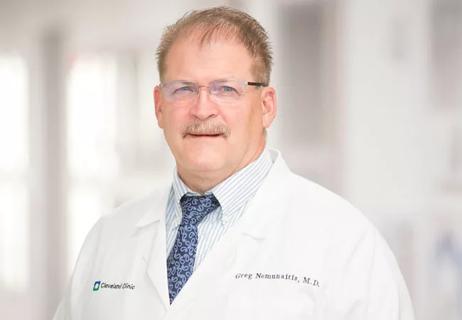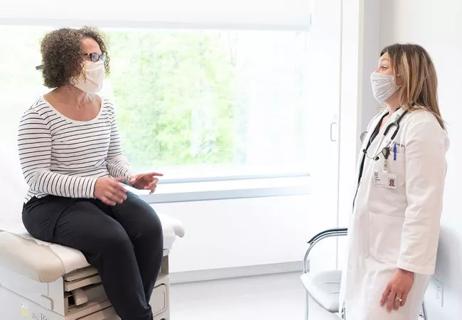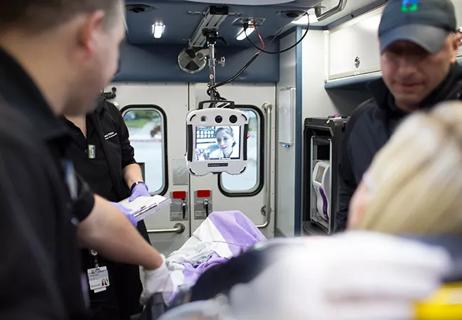Advertisement
In survey, both female and male respondents reporting ongoing concerns

Nearly two in three neurosurgeons have witnessed sexual harassment at work, during training or during a professional event, according to a recent survey of neurosurgeons administered by the Congress of Neurosurgeons on behalf of the Society of Neurological Surgeons. More than half of respondents say they have been harassed personally.
Advertisement
Cleveland Clinic is a non-profit academic medical center. Advertising on our site helps support our mission. We do not endorse non-Cleveland Clinic products or services. Policy
Although both male and female neurosurgeons reported concerns about sexual harassment, women were more likely to experience it.
“In recent years, the neurosurgery community has made a concerted effort to attract and retain more bright, competent women,” says Deborah Benzil, MD, Vice Chair of Neurosurgery at Cleveland Clinic’s Center for Spine Health. “Unfortunately, sexual harassment in our specialty — if allowed to persist — will undermine that. Besides steering women away from neurosurgery careers, harassment may contribute to burnout for women already in the field.”
Dr. Benzil led the multicenter team that developed and conducted the sexual harassment survey, an effort initiated by the Neurosurgery Professionalism Taskforce convened by multiple neurosurgery professional societies. It was the first comprehensive evaluation of sexual harassment in the specialty. Survey results were published recently in the Journal of Neurosurgery.
“Even before the #MeToo movement, sexual harassment was a concern in the healthcare community, particularly in specialties like neurosurgery, which is known for male dominance and hierarchical structure,” says Dr. Benzil. “However, the issue needed to be clearly defined before we could begin to address it. Our survey was the first step in measuring the prevalence and severity of sexual harassment, determining which populations are most likely to experience or perpetrate it, and assessing contributing systemic factors.”
Out of a survey population of 5,166 individuals, 622 (12%) completed the survey. Of those respondents, 20% were female — a greater representation of women than among neurosurgeons overall (8% female) or among neurosurgery residents (19% female).
Survey results indicated:
Advertisement
“Despite the low response rate to the survey and the slightly disproportionate number of female respondents, these findings are noteworthy,” says Dr. Benzil. “They show that sexual harassment in neurosurgery is real and is quantifiable.”
Offending episodes referenced by survey respondents spanned a wide range of time, from within the past few months to more than 10 years ago. “The problem isn’t just historic; it’s ongoing,” says Dr. Benzil.
Advertisement
It’s not the first time Dr. Benzil has shed light on challenges to diversity within neurosurgery. She was lead author on “The Future of Neurosurgery: A White Paper on the Recruitment and Retention of Women in Neurosurgery,” published in 2008 in the Journal of Neurosurgery. That landmark article, which pointed out gender inequity and called on the American Association of Neurological Surgeons to help end discriminatory practices, positioned her as a champion of women in the specialty.
Dr. Benzil claims that of her most significant work, including as a pioneer of spine stereotactic radiosurgery, the white paper “has probably had the greatest impact on the practice of medicine over time and for the greatest number of individuals.”
“The current study on sexual harassment…carries the same potential and I know will stand at the conclusion of my career as one of the works for which I am most proud to have been a key player,” writes Dr. Benzil in a response to an editorial accompanying her team’s publication of the survey results in the Journal of Neurosurgery.
Ending sexual harassment in neurosurgery will require a culture shift, Dr. Benzil says. That may include:
“Our survey and its results have helped raise awareness of the unconscious bias in our specialty,” says Dr. Benzil. “Challenging the status quo is never comfortable, but I’m encouraged by the responses from both male and female survey participants who are overwhelmingly supportive of bringing meaningful change.”
Advertisement
Advertisement

Analysis characterizes geography’s sizable role in urban/rural care divides

New analysis details the disparities and points to opportunities for improvement

Group advocates for stroke systems of care supported by telestroke and proper reimbursement

Dr. Gregory Nemunaitis looks to build on his history of integrating education, research and patient care

Mission centers on screening, prevention for at-risk women in their 30s to 60s

One-year results from national database confirm enduring benefits

Q&A with Dr. Andrew Russman, Medical Director of our Comprehensive Stroke Center

From B-PROUD to EXTEND-IA TNK to a novel TMS delivery method